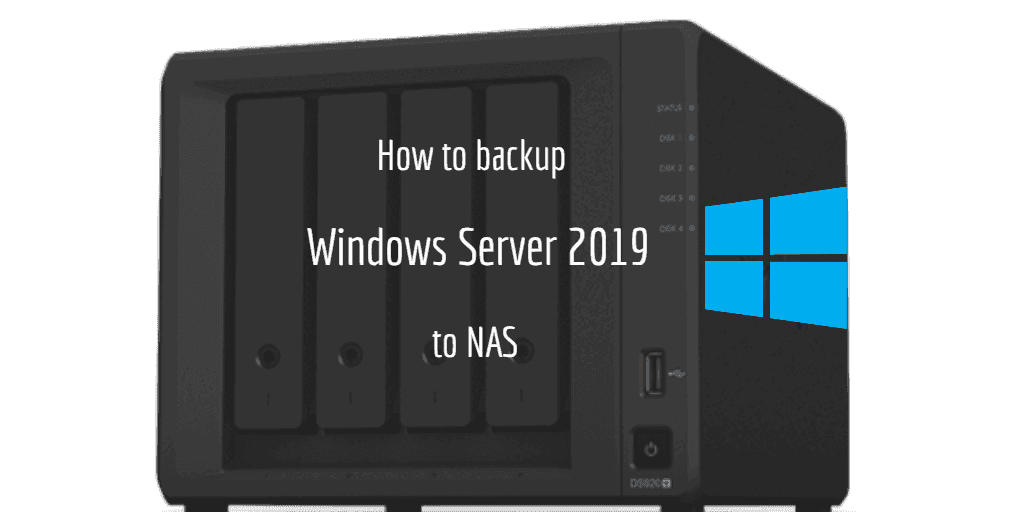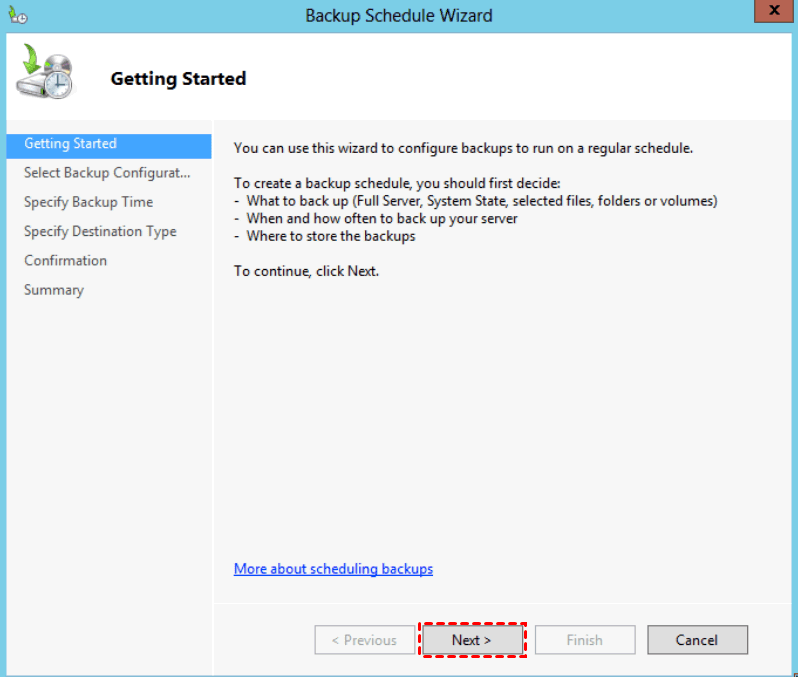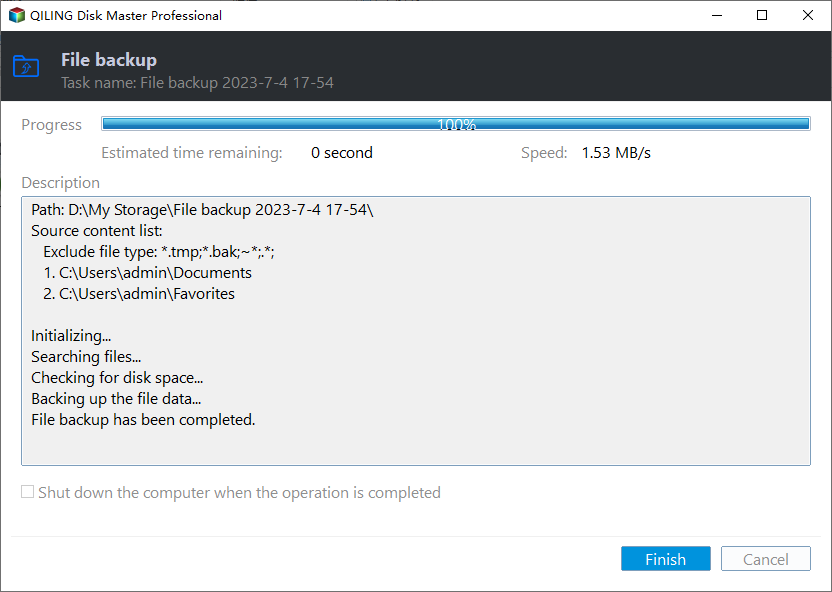3 Methods to Backup Windows Server 2019 to NAS/Network Share
Why backup Windows Server 2019 to NAS?
Windows Server is a powerful operating system that enables a computer to manage and provide various network roles, including print servers, domain controllers, web servers, and file servers. It is widely used in business settings, where it plays a critical role in managing and safeguarding sensitive data and information.
Network-Attached Storage (NAS) is a popular solution among companies that enables multiple clients to store and share files with fast data access and easy administration. When considering backing up Windows Server 2019, NAS emerges as an ideal destination, offering several key advantages.
One of the key benefits of using NAS for backing up Windows Server 2019 is the significant storage space it provides. This allows you to store a large amount of data, ensuring that your critical files and information are safely backed up.
One of the key advantages of using NAS for data storage is the ability to access and share data with multiple clients on the network. With NAS, you can easily share files and folders with colleagues or team members, making it an ideal solution for collaborative work environments.
One of the key benefits of using NAS is its ability to stream media content to multiple devices on the network. With NAS, you can easily stream movies, TV shows, music, and photos to any computer, laptop, or mobile device connected to the network, making it a great solution for home entertainment systems or media centers.
One of the key advantages of NAS storage over traditional PC storage is its durability. NAS devices are less prone to damage from accidents, such as spills, drops, or electrical surges, making them a more reliable option for storing valuable data.
Some NAS drives come equipped with RAID (Redundant Array of Independent Disks) options, which enable data duplication across multiple drives. This feature serves as a vital component of a NAS disaster recovery strategy, ensuring that data remains accessible even in the event of drive failure or other catastrophic events.
3 Methods for Windows Server backup to NAS
Since there are so many benefits to backing up Windows Server to NAS, how to achieve it? Here I compiled 3 methods and hopefully one of them could suit your case.
☛ Method 1. Windows Server Backup
Windows Server Backup, the native backup solution for Windows Server, has undergone significant improvements over the years. Initially, it lacked the capability to back up to a network location, but with the introduction of the "Remote shared folder" option in 2012, users gained the ability to store backups on a network-attached storage (NAS) device. This feature has been available in subsequent versions, including Windows Server 2019 and 2022, making it a convenient option for system administrators to manage backups.
Despite its improvements, Windows Server Backup still has some functional limitations. One notable issue is that subsequent backups will overwrite previous ones, effectively allowing only one full backup to be retained. Additionally, even with the remote backup feature, users have reported errors when attempting to specify NAS drives as the destination.
To successfully perform a Windows Server backup to a NAS drive, it's essential to set up a VHD or iSCSI Target on your NAS device beforehand. Once this is done, you can select the created volume as the backup destination within Windows Server Backup.
If you're finding the process of setting up a Windows Server backup to a NAS drive to be complex, you're not alone. Fortunately, there are comprehensive tutorials available that provide step-by-step instructions with detailed screenshots. These resources can help guide you through the process and ensure a successful backup.
>> Create a virtual hard disk and attach it to NAS
>> Create an iSCSI Target on NAS device
After configuring the NAS drive as a backup destination, you can proceed to create the backup task in Windows Server Backup. During this step, you will select the NAS drive as an additional drive to store the backup files.
If you're unsure about how to access and utilize the utility for image backup, please refer to the comprehensive guide on Windows Server Backup for detailed instructions and guidance.
☛ Method 2. Active Backup for Business
If you're looking to perform a Windows Server backup to your Synology NAS, Active Backup for Business might be a suitable backup solution for your Windows physical server, PC, rsync/SMB file server, and VMware vSphere/Microsoft Hyper-V virtual machine. For detailed instructions, please refer to the official tutorials:
>> Backup full Windows PC/Server
>> Backup individual folders on Windows Server
☛ Method 3. Professional backup program (Recommended)
As you can see from above, there are several must-do configurations required before performing a Windows Server 2019 backup to a NAS. Additionally, different NAS devices may have unique scenarios that need to be addressed. If you'd rather not spend time on these steps and prefer a more direct solution with a higher success rate, the following method might be a better fit for you.
Easy and effecient way to backup Windows Server to any NAS
Qiling Disk Master Server is a comprehensive backup and restore solution specifically designed for Windows Server. This program offers a complete set of features, including backup, sync, and clone capabilities, and is compatible with a wide range of operating systems and storage devices.
- With Qiling Disk Master Server, you can easily back up your Windows Server 2019, 2022, 2016, and other versions to a network-attached storage (NAS) device, network share, or cloud storage in just a few clicks.
- Unlike Windows Server Backup, QDMS (Qiling Disk Master Server) offers more advanced backup capabilities, including the ability to schedule incremental or differential backups, allowing you to keep multiple backup images for a more accurate restore.
- QDMS (Qiling Disk Master Server) provides a customizable retention policy feature, enabling you to set specific rules for automatically deleting backup images, ensuring that your backup storage remains organized and efficient.
|
Supported OS |
Windows Server 2022, 2019, 2016, 2012, 2011, 2008, 2003 (including R2) Windows SBS 2003, 2008, 2011 Windows 11, 10, 8.1, 8, 7, Vista, XP |
|
Supported Devices |
All devices recognized by Windows, such as IDE, SATA, iSCSI, SCSI disk, IEEE1394 (Firewire). Hard disk drive (HDD), solid-state drives (SSD) and SSHD. Network-Attached Storage (NAS), Shared Network and cloud drive. External hard drives (USB 1.0/2.0/3.0), PC card, all removable flash drives and thumb drives. Hyper-V, Virtual box, VMware virtual disk and other virtual systems, etc. |
Get started with QDMS (Qiling Disk Master Server) today! Simply download the trial version and follow the easy-to-follow guide to experience the benefits of our software for yourself.
*If you have a large number of machines to protect, the Tech Plus edition might be the better choice for you. For more information, please check out our edition comparison.
How to backup Server 2019 to NAS/network share:
1. To get started, ensure you can access your NAS. Once connected, launch the software and navigate to Backup > File Backup. Alternatively, you can choose System Backup to safeguard the OS of your Windows Server 2019.
2. To proceed, click on Folders or Files to specify the data you wish to backup. If you have chosen System Backup in the previous step, the operating system will be automatically selected for backup.
To proceed, click the funnel icon beside the folder path. Here, you can utilize the Filter settings to customize the file inclusion or exclusion criteria.
3. To configure Windows Server to back up to a network share or NAS, click on the inverted triangle icon beside the destination field and select Add Share or NAS Devices. Enter the IP address to add it as a target, and then choose a folder to receive the backup.
4. Before proceeding, you can click Schedule Backup to set up automatic backups on a daily, weekly, monthly, or event-triggered schedule, or even when a USB device is plugged in. To optimize storage space on your NAS, consider creating a retention policy to automatically delete obsolete backups.
In the Options menu, you can configure various settings to customize your backup process, including compression level, image splitting, encryption, and email notifications.
👉 Related tips:
- If you're concerned about the stability of your Windows Server installation, it's a good idea to create a system backup task on a regular schedule. Additionally, consider creating a bootable media for system restore in WinPE, which can help ensure that you can recover your system in case of a crash or other issues.
- To replicate folders from Windows Server to a NAS while preserving the original format and structure, consider utilizing the Sync features. Qiling Disk Master offers various synchronization modes, including one-way sync, two-way sync, File Sync, and File Sync. This allows you to even sync files between two Windows Servers, maintaining the integrity of the original data.
- When you create a Qiling account, you gain access to the ability to backup files to Qiling Cloud. This service provides you with 1TB of free storage for 15 days after signing up for an account.
Conclusion
Are you looking to backup your Windows Server 2019 to a NAS device like Synology or QNAP? Qiling Disk Master Server is a more suitable option than Windows Server Backup, offering higher compatibility and a wider range of features. Whether you want to backup Windows Server 2019 or Windows Server 2016 to a NAS, network share, cloud drive, or vice versa, the process can be completed with just a few clicks, making it quick and simple.
In addition to its backup capabilities, Qiling Disk Master's restore function is equally impressive. You can even perform a Windows Server system restore to a different hardware configuration, making it a versatile tool. Furthermore, the Clone feature allows you to migrate Windows Server to an SSD without the need for a reinstall, making the process even more efficient and streamlined.
Related Articles
- How to Backup Windows Server 2019/2016/2012 in the Best Way?
You will learn the best way and how to backup a server to prevent data from losing. Get details below right now! - Best Way to Backup Windows Server 2008 to NAS/Network Share
This article tells you how to get Windows Server 2008 automated backup to NAS or network share in simple steps. And you are able to keep multiple backups for disaster recovery. - Create Backups with Windows Server Backup Command Line
You will learn how to use Windows Server Backup command line with Wbadmin or third-party tool. Besides, you can use the GUI version of backup software if you want a simpler way. - How to Backup Windows Server 2016 to An External Hard Drive?
This article describes why backup Windows Server 2016 to external hard drive and 2 ways to achieve the goal, including the built-in tool and the professional third-party software.





